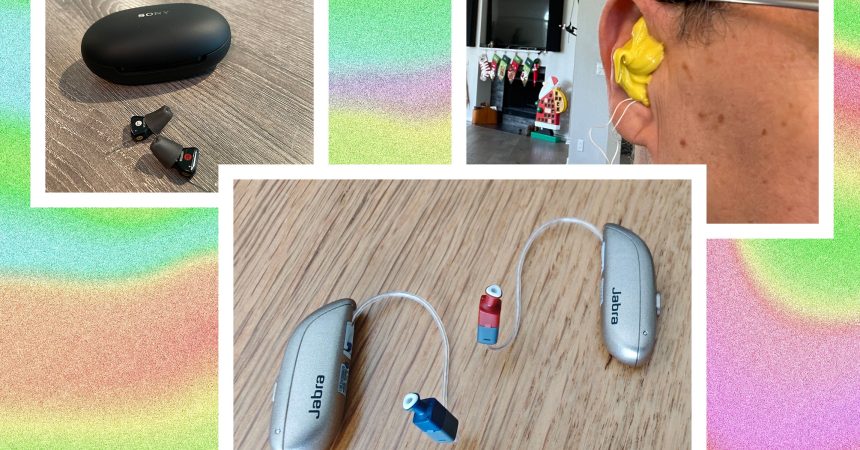Hearing Aids: A Comprehensive Overview and Comparative Analysis
The landscape of hearing aids offers a diverse range of options, varying significantly in price, features, and performance. Navigating this market requires careful consideration of individual needs and preferences, as well as a keen awareness of the strengths and weaknesses of each device. This expanded summary delves deeper into several hearing aid models, providing a comprehensive analysis to inform your decision-making process.
Premium Options with Professional Fitting:
The Signia Pure Charge&Go IX represents a high-end hearing aid solution requiring professional fitting by an audiologist. While initial impressions might be underwhelming, extensive fine-tuning through the Signia administration app, accessible only to professionals, can dramatically enhance the listening experience. This customization potential makes the Signia Pure Charge&Go IX a viable option for individuals with complex hearing needs. However, the significant price range of $4,000 to $10,000 necessitates careful consideration of budget constraints. The Eargo 7 also offers high-quality sound and professional tuning options. Its streamlined design and multiple listening programs contribute to a comfortable and personalized listening experience. While the Eargo 7 excels in performance, its price point of $2,699 might be a deterrent for budget-conscious consumers.
Mid-Range Alternatives and Bluetooth Integration:
The Sony CRE-E10 distinguishes itself with its Bluetooth earbud form factor, providing a more discreet appearance compared to traditional hearing aids. While comfortable for shorter durations, extended wear might lead to discomfort. The rechargeable battery, lasting up to 26 hours, and the app-based control and hearing test offer convenience and customization. The excellent audio quality at low volumes, albeit with some echo and noise, is complemented by decent media and call streaming capabilities. The Elehear Alpha Pro caters to individuals with mild hearing loss, offering a cost-effective solution at $449. The traditional design, coupled with a free audiologist consultation, simplifies the initial setup. Multiple listening modes and customizable presets further enhance the user experience. The impressive 20-hour battery life and rechargeable carrying case add to the overall value proposition.
Hearing Aids to Avoid: A Cautionary Tale
Not all hearing aids deliver on their promises, and some can even be detrimental to hearing health. This section highlights devices that, despite their affordability or advertised features, fall short in terms of performance, comfort, or overall value. The Audien Atom One, while budget-friendly at $98, lacks essential features and customization options, hindering its effectiveness. The Lexie Lumen suffers from design flaws, including a fragile case and connectivity issues, despite its seemingly reasonable price of $699. The Olive Union Olive Max, with its bulky early-2000s aesthetic, exhibits mixed performance and persistent background noise, rendering it unsuitable for loud environments. Its functionality as wireless earbuds, however, offers some redeeming value. The Ceretone Core One’s basic and ineffective app, coupled with a blunt listening experience and discomfort during extended wear, makes it a poor investment. The Sennheiser All-Day Clear, despite its $800 price tag, fails to deliver effective amplification and suffers from a noticeable background hiss. Its bulky design further adds to the user’s woes. The Linner Nova, while resembling AirPods, struggles to perform effectively as both a hearing aid and streaming earbuds. Finally, the MDHearing Neo and Neo XS, despite their celebrity endorsement, suffer from an uncomfortable and outdated design, coupled with screeching feedback upon even the slightest touch.
Choosing the Right Hearing Aid: A Personalized Approach
Selecting the optimal hearing aid requires careful consideration of individual needs, preferences, and budgetary constraints. Consulting with an audiologist is crucial for accurate hearing assessments and personalized recommendations. While professional fitting might be essential for certain high-end devices, other options offer user-friendly setup and customization through intuitive apps. Prioritizing comfort, especially for extended wear, is essential for a positive user experience. The availability of features such as Bluetooth connectivity, rechargeable batteries, and multiple listening modes further enhances convenience and versatility. Finally, avoiding subpar devices that lack essential features or compromise hearing health is paramount. By considering these factors and seeking professional guidance, individuals can make informed decisions and invest in hearing aids that enhance their quality of life.
Budgetary Considerations and Long-Term Value:
The price of hearing aids can range dramatically, from budget-friendly options under $100 to premium devices exceeding $10,000. While cost is a significant factor, focusing solely on price can lead to suboptimal choices. Evaluating the long-term value of a hearing aid involves considering its durability, features, and potential to improve hearing outcomes. Investing in a slightly more expensive device with superior performance and longevity might be more cost-effective in the long run compared to repeatedly replacing cheaper, less reliable options.



